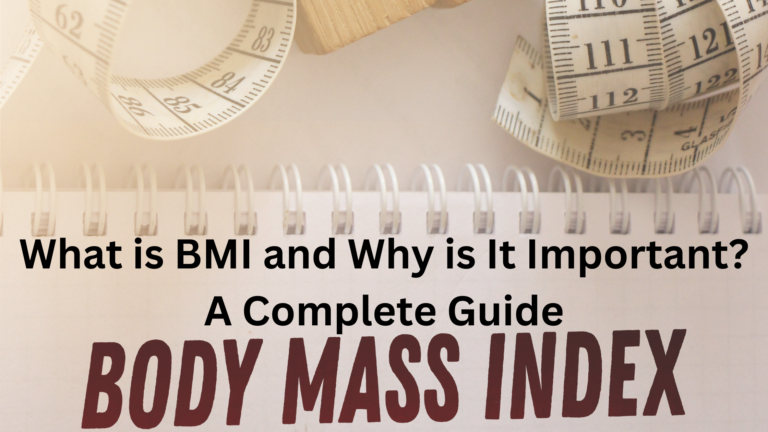Understanding your menstrual cycle is crucial for many women, whether you’re trying to conceive, avoid pregnancy, or simply gain insights into your reproductive health. One of the most effective tools for this purpose is an ovulation calculator. This article will delve into the significance of using an ovulation calculator, how it works, and its role in answering essential questions like, “If my period lasts 3 days, when do I ovulate?” We’ll also explore how to use a date calculator for precise tracking.
What Is an Ovulation Calculator?
An Ovulation Calculator is a tool designed to help individuals predict their most fertile days based on their menstrual cycle. It estimates when ovulation – the release of an egg from the ovary – is likely to occur, which is essential for understanding the best timing for conception or for natural family planning.
The tool works by asking for information about the first day of the last menstrual period and the typical length of the menstrual cycle. Using this data, it calculates an approximate ovulation window, usually occurring about 14 days before the start of the next menstrual period. For women with a regular 28-day cycle, this window typically falls between days 12 to 16 of the cycle. However, since cycles vary in length and can be irregular, ovulation calculators offer a general prediction rather than an exact date.
By identifying fertile days, an ovulation calculator helps individuals maximize their chances of pregnancy. It can also support those looking to avoid pregnancy by helping them be aware of their peak fertility days. Although it’s a useful tool, it’s most effective when used in combination with other ovulation-tracking methods, such as monitoring basal body temperature, cervical mucus, or using ovulation test kits, as these methods provide a clearer picture of the ovulation period.
How Does an Ovulation Calculator Work?

An ovulation calculator works by estimating the likely days of ovulation based on information about a person’s menstrual cycle. Since ovulation typically occurs about 14 days before the start of the next period, an ovulation calculator uses the length of your cycle to predict when ovulation may occur, helping you identify your fertile window – the days when you’re most likely to conceive.
To use an ovulation calculator, you’ll need to input the first day of your last menstrual period and the average length of your menstrual cycle (the number of days from the first day of one period to the first day of the next). The calculator then projects your next ovulation date by counting backwards from the estimated start of your next period. For example, in a standard 28-day cycle, ovulation is predicted around day 14, while in a 30-day cycle, it’s likely around day 16.
Since cycles can vary month to month, this tool provides a general estimate rather than a precise day. Ovulation calculators are most accurate for individuals with regular cycles, but those with irregular cycles may still benefit by tracking patterns over several months. For greater accuracy, using an ovulation calculator alongside other ovulation detection methods, such as basal body temperature tracking, cervical mucus observation, or ovulation test kits, can enhance your understanding of your fertility and help you pinpoint ovulation more accurately.
To effectively utilize an ovulation calculator, you need to know a few key details:
- First Day of Your Last Period: This is essential for calculating the length of your cycle.
- Average Length of Your Cycle: A typical cycle ranges from 21 to 35 days.
- Cycle Regularity: Understanding whether your cycle is regular or irregular can impact the accuracy of the predictions.
How to Use an Ovulation Calculator
Using an ovulation calculator is simple and can be a valuable way to track your fertility window. Here’s a step-by-step guide on how to use an ovulation calculator effectively.
- Track the Start of Your Last Menstrual Period: To use an ovulation calculator accurately, you’ll first need to know the date when your last period began. This is the starting point of your menstrual cycle.
- Know Your Average Cycle Length: The calculator also requires information about the length of your menstrual cycle, which is the number of days from the start of one period to the start of the next. For most women, this is around 28 days, but it can vary. If your cycle length changes from month to month, it’s best to use an average over a few months for more accuracy.
- Input Information into the Ovulation Calculator: Once you have your start date and cycle length, input this data into the ovulation calculator. The calculator will estimate your ovulation day, which is typically about 14 days before your next expected period.
- Review Your Fertile Window: Based on the calculation, you’ll be given a fertility window—usually about 6 days when conception is most likely. This includes the days leading up to and shortly after ovulation, as sperm can live in the female body for up to five days.
- Plan Accordingly: If you’re trying to conceive, this fertile window is the best time for conception efforts. If avoiding pregnancy, being aware of these dates can help you make informed choices.
It’s important to remember that an ovulation calculator provides an estimate, especially if you have irregular cycles. To increase accuracy, consider combining the calculator with other methods, such as monitoring basal body temperature or checking for ovulation symptoms.
Using an ovulation calculator is straightforward:
- Enter the first day of your last menstrual period.
- Input the average length of your menstrual cycle.
- Hit calculate to receive your estimated ovulation date and fertile window.
The Importance of Tracking Ovulation
Tracking ovulation is crucial for individuals aiming to understand their fertility patterns, whether to increase their chances of conception or to manage natural family planning. Knowing when ovulation occurs allows individuals to identify their “fertile window” — the days when they are most likely to conceive. The process of tracking ovulation involves observing changes in the menstrual cycle, which provides valuable insight into hormonal health and reproductive readiness.
One of the easiest and most accessible ways to track ovulation is by using an ovulation calculator. This tool uses the date of the last menstrual period and average cycle length to estimate when ovulation is likely to happen. For someone with a regular cycle, ovulation usually occurs about 14 days before the next period. An ovulation calculator helps narrow down this window, indicating the days when conception is most likely if intercourse occurs.
Beyond conception goals, tracking ovulation can reveal vital information about hormonal balance. For instance, irregular or absent ovulation may point to underlying health issues like polycystic ovary syndrome (PCOS) or thyroid imbalances. Additionally, understanding one’s cycle helps predict menstruation, enabling better planning around physical and emotional changes that often accompany different cycle phases.
While ovulation calculators provide a helpful starting point, combining this tool with other tracking methods — like basal body temperature measurement, cervical mucus observation, or ovulation predictor kits — can offer a more accurate and holistic view of fertility. Tracking ovulation empowers individuals with knowledge about their bodies, leading to more informed health and lifestyle choices aligned with personal reproductive goals.
Tracking ovulation is vital for several reasons:
- Fertility Awareness: Knowing when you ovulate can significantly increase your chances of conception.
- Understanding Cycle Regularity: It helps identify irregularities that could signify health issues.
- Family Planning: For those avoiding pregnancy, tracking ovulation can help you time intercourse accordingly.
If My Period Lasts 3 Days, When Do I Ovulate?
If your period lasts 3 days, the timing of ovulation can vary based on the length of your cycle. Here’s how to estimate your ovulation date using an ovulation calculator:
- Determine Cycle Length: If you have a typical 28-day cycle, ovulation generally occurs around day 14. For a shorter cycle (e.g., 21 days), ovulation may happen around day 7.
- Use the Calculator: Input your cycle information into the ovulation calculator to receive a precise estimate of your ovulation day.
The Fertile Window
Understanding your fertile window is critical. The fertile window is typically the six days leading up to and including ovulation. This means if you ovulate on day 14, your fertile window would be from day 8 to day 14.
The fertile window is the span of days during a menstrual cycle when a person has the highest chance of conceiving. This period typically includes the day of ovulation and the five days leading up to it, as sperm can live in the reproductive tract for up to five days, and the egg remains viable for about 24 hours post-ovulation. Identifying the fertile window is crucial for those trying to conceive, as it focuses efforts on the days when conception is most likely.
An ovulation calculator can be a helpful tool in pinpointing this fertile window by estimating when ovulation is likely to occur. By inputting the first day of the last menstrual period and average cycle length, the calculator projects ovulation’s probable timing, giving a clearer idea of which days are the most fertile. For example, in a typical 28-day cycle, the fertile window generally falls between days 10 and 16, with ovulation around day 14.
Using an ovulation calculator for tracking the fertile window is especially useful for those with regular cycles, as it provides a reliable prediction of peak fertility. For those with irregular cycles, the calculator can still be helpful when used alongside other methods, like monitoring basal body temperature or cervical mucus. Together, these methods give a comprehensive view of the fertile window, making it easier to optimize timing for conception.
know More : 1 to 3 month pregnancy diet chart
Utilizing a Date Calculator for Tracking
Using a date calculator for tracking ovulation can be incredibly helpful for individuals aiming to predict their fertile days and understand their menstrual cycle patterns. An ovulation calculator, in particular, works by estimating the timing of ovulation based on cycle dates, providing insight into when conception is most likely to occur.
To use an ovulation calculator effectively, you begin by entering the first day of your last menstrual period and your typical cycle length, which is the number of days from the start of one period to the start of the next. For those with a regular 28-day cycle, ovulation typically occurs around day 14, but cycle lengths can vary, so the calculator adjusts the estimated fertile window accordingly.
By utilizing a date calculator specifically for ovulation tracking, you receive a clearer picture of your “fertility window,” typically spanning 5-7 days before and after ovulation, as sperm can live for up to five days in the reproductive tract. This information allows individuals who are trying to conceive to plan intercourse around peak fertility days. Additionally, those aiming to avoid pregnancy may use these dates as a guide for natural family planning, though combining this method with other ovulation indicators, like basal body temperature or ovulation tests, can increase accuracy.
Using a date calculator for ovulation tracking also provides a structured record of menstrual cycle patterns over time. This can help identify irregularities, prepare for healthcare discussions, and create a personalized approach to fertility planning, offering a holistic view of reproductive health.
A date calculator can complement the ovulation calculator by helping you track dates accurately:
- Mark Important Dates: Use a date calculator to note the first day of your period and estimated ovulation date.
- Plan Ahead: With the dates calculated, you can plan for conception or avoid unplanned pregnancies more effectively.
Benefits of Using a Date Calculator
- Precision: Date calculators allow you to track the cycle accurately.
- Planning: It aids in planning for doctors’ appointments or pregnancy tests.
Myths About Ovulation Calculators
Despite their utility, several myths surround ovulation calculators. Let’s dispel some of these misconceptions:
Myth 1: Ovulation Calculators Are Always Accurate
While ovulation calculators can provide valuable estimates, they may not always be 100% accurate. Factors like stress, illness, and hormonal changes can influence ovulation timing.
Myth 2: Irregular Cycles Cannot Be Tracked
Even if your cycle is irregular, you can still use an ovulation calculator. Inputting the average cycle length can give you a rough estimate, though it may vary from month to month.
Myth 3: Ovulation Is Only Important for Those Trying to Conceive
Understanding ovulation is beneficial for everyone. Whether you’re planning a family or simply monitoring your health, knowing your cycle helps you understand your body better.
The Role of Hormones in Ovulation

Hormones play a critical role in regulating ovulation, the process in which an egg is released from the ovary, ready for fertilization. The interplay of hormones such as luteinizing hormone (LH), follicle-stimulating hormone (FSH), estrogen, and progesterone coordinates the stages of the menstrual cycle and ovulation itself. An ovulation calculator can help predict the timing of these hormonal changes, giving insight into fertile windows by calculating ovulation based on cycle length.
The process begins with the follicular phase, where FSH stimulates the growth of ovarian follicles, each containing an immature egg. One follicle becomes dominant, growing and producing increasing amounts of estrogen. This rise in estrogen prepares the uterine lining for a potential pregnancy and triggers a spike in LH levels. The LH surge is the key hormonal event that initiates ovulation, causing the mature follicle to release an egg about 24-36 hours after the peak.
Once released, the egg travels down the fallopian tube, where it can be fertilized. The luteal phase follows, with the ruptured follicle transforming into the corpus luteum and secreting progesterone. Progesterone maintains the uterine lining for a potential pregnancy. If pregnancy does not occur, progesterone and estrogen levels drop, leading to the shedding of the uterine lining, known as menstruation.
An ovulation calculator uses the timing of these hormonal patterns, estimated by cycle data, to predict when ovulation is most likely to occur, which typically happens about 14 days before the next period in a regular cycle. While it cannot measure hormone levels directly, it provides a useful guide to when hormone-driven ovulation likely occurs, helping individuals plan for conception or understand their cycle more effectively.
Hormones play a crucial role in the menstrual cycle and ovulation. Key hormones include:
- Estrogen: This hormone rises in the first half of the cycle, promoting the thickening of the uterine lining.
- Luteinizing Hormone (LH): A surge in LH triggers ovulation.
- Progesterone: After ovulation, progesterone helps maintain the uterine lining.
How Hormonal Changes Affect Your Cycle
Hormonal imbalances can lead to irregular cycles. If you notice significant changes, it may be time to consult a healthcare professional.
Signs of Ovulation
Recognizing the signs of ovulation can enhance the effectiveness of your ovulation calculator. Some common signs include:
- Changes in Cervical Mucus: Mucus becomes clearer and stretchier during ovulation.
- Mild Cramping: Some women experience light cramping on one side of the lower abdomen.
- Increased Libido: Many women notice an increase in sexual desire during ovulation.
Tracking Signs of Ovulation with a Calendar
In addition to using an ovulation calculator, maintain a calendar to track your menstrual cycle and ovulation signs. This can provide further insights into your cycle’s patterns.
Tips for Maximizing Fertility

If you’re trying to conceive, consider these tips in conjunction with your ovulation calculator:
- Maintain a Healthy Lifestyle: A balanced diet and regular exercise can positively impact your fertility.
- Reduce Stress: High-stress levels can affect ovulation; consider relaxation techniques like yoga or meditation.
- Limit Alcohol and Caffeine: Reducing these substances can help improve overall reproductive health.
When to Seek Medical Advice
If you’ve been tracking your cycle and trying to conceive for over a year (or six months if you’re over 35) without success, consider consulting a healthcare provider. They can offer personalized advice and explore underlying health issues.
Read More : Ovulation Kits
Conclusion
Your ovulation calculator is a powerful tool for understanding your menstrual cycle and enhancing fertility awareness. By knowing when you ovulate and understanding your cycle, you can make informed decisions regarding conception and overall reproductive health. Remember, if your period lasts 3 days, use the ovulation calculator to help determine when you might ovulate and maximize your chances of conception. Coupling this knowledge with a date calculator can further streamline your cycle tracking efforts.










